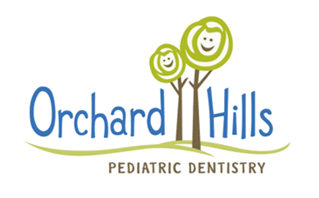Yay for behavior guidance!
Behavior Guidance Techniques
Behavior guidance techniques are used to promote a positive dental attitude, safety, and quality dental care. Through communication, the dental team can assist your child with fear and anxiety, teach coping mechanisms, and guide your child to be cooperative, relaxed, and self-confident in the dental setting.
Basic and advanced behavior guidance techniques have a proven track record of success and are a large portion of the training program for pediatric dentists.
Basic Behavior Guidance
Tell-show-do includes:
- Verbal explanation of the procedure in phrases appropriate to the developmental level of your child (“Tell”)
- Demonstration for your child (“Show”)
- Completion of the procedure (“Do”).
Positive reinforcement includes:
- Rewarding desired behavior with praise, stickers or prizes, and toys.
Distraction includes:
- Diverting your child’s attention away from the actual dental procedure by using video games, movies, and television programs.
With basic behavior guidance techniques, we use local anesthesia, a numbing agent to “make the teeth sleepy”. Often this is all that is required for cooperative children.


Sedation and General Anesthesia
(Advanced Behavior Guidance)
These procedures are good for:
- Fearful, anxious children.
- Children who are unable to cooperate due to lack of emotional maturity or mental, physical, or medical disability.
- Children for whom sedation or general anesthesia may protect the developing psyche and/or reduce medical risk.
For advanced behavior guidance, we use local anesthesia along with one of the following:
Sedation-Nitrous Oxide
Uses laughing gas (nitrous oxide/oxygen) to achieve mild sedation. This gas is most successful for the understanding child who is anxious about dental care. Laughing gas is a very safe drug that has an onset time of about 5 minutes and loses its effect in about the same amount of time when your child returns to breathing room air.
Sedation-Versed
Uses nitrous oxide plus a short-acting drug (i.e. Versed) that produces additional sedation and memory loss (in about 75% of children) for the duration of the dental treatment. The drug is given by mouth approximately 15 minutes before dental work begins. This technique is used for short procedures (less than 30 minutes). A recent, normal physical examination from your family physician or pediatrician is usually required.
Important notes about sedation:
Most of the time, your child will not be asleep during the above sedations. Children less than 25 pounds are not good candidates for sedation. Also, there is no drug (or combination of drugs) that works well for all children. Pediatric patients vary significantly in their metabolic rates and in their response to drug therapy. Sedation works successfully in about half of children. According to the pediatric dental literature, some children can have a paradoxical reaction to sedation medications, meaning your child may become agitated instead of sedated. Unfortunately, we cannot predict which children will have this response.


General Anesthesia
General anesthesia is a safe method to deliver needed dental care. All of your child’s treatment is completed in a single visit while he or she is asleep, safe and comfortable. It is often the treatment of choice for:- Emergency procedures
- Children who require special medical care or have physical or emotional disabilities
- Children who require extensive treatment
- Children who are extremely fearful of the medical/dental environment
- Children who live long distances from our clinic and have extensive treatment needs that would require multiple sedation appointments.
General anesthesia is the use of anesthetic gases and drugs that “put the child to sleep.” They are administered only by an anesthesiologist or nurse anesthetist. Your child is unaware of dental treatment while under the influence of a general anesthetic. We perform general anesthesia in two different settings:
In Our Ambulatory Surgery Center:
A medical doctor (i.e., anesthesiologist) or a certified registered nurse anesthetist works with a registered nurse to provide this service in our very own Medicare Certified Ambulatory Surgery Center.
In the Hospital:
Our pediatric dentists are credentialed at all three of our local hospitals. We treat patients at Kadlec Regional Medical Center, Kennewick General Hospital, and Lourdes Medical Center.

Connect With Us
Office Hours
Monday-Friday with variable times to accommodate all of our patients.
Our kids dental team is ready for you! Call 509-375-5000


